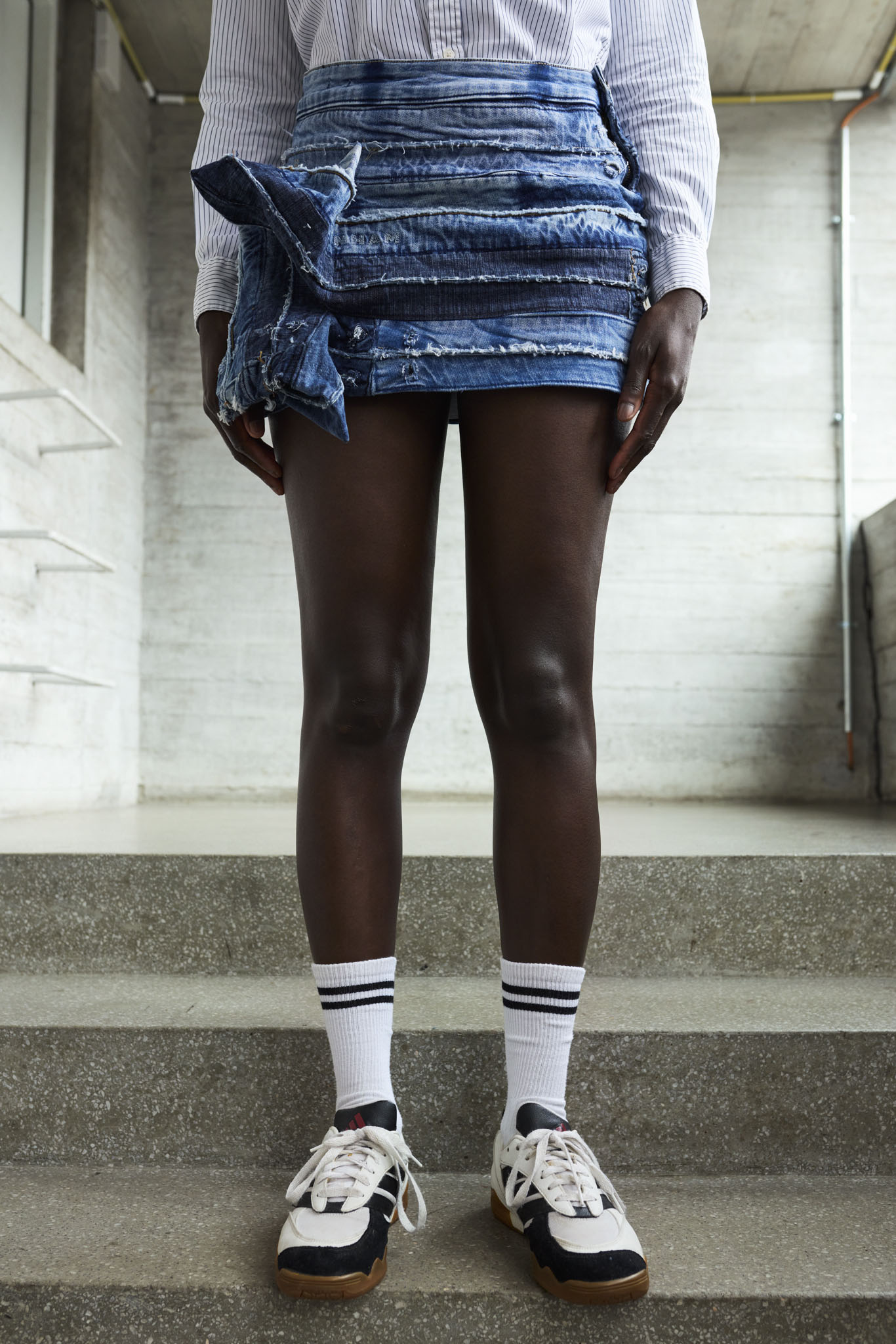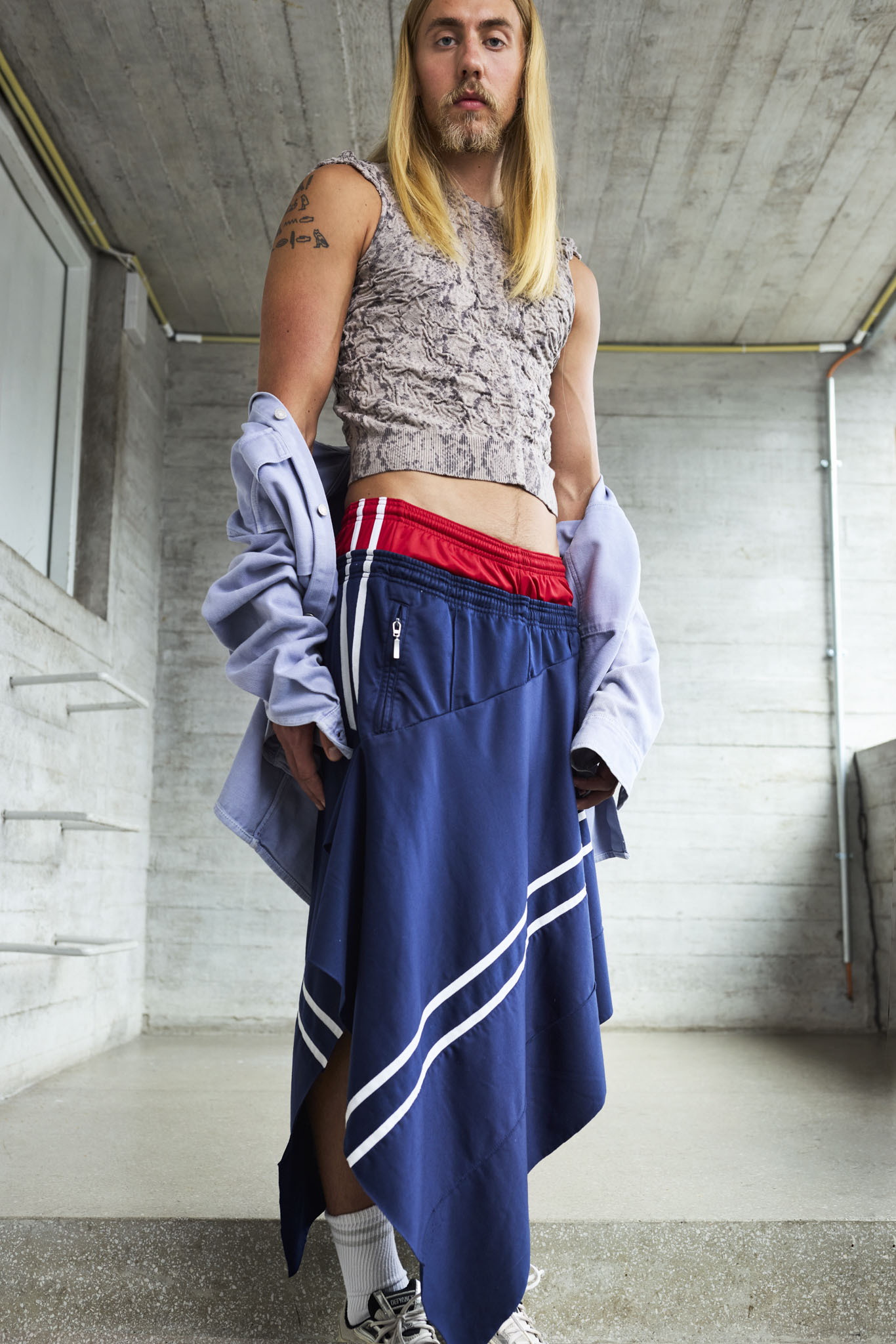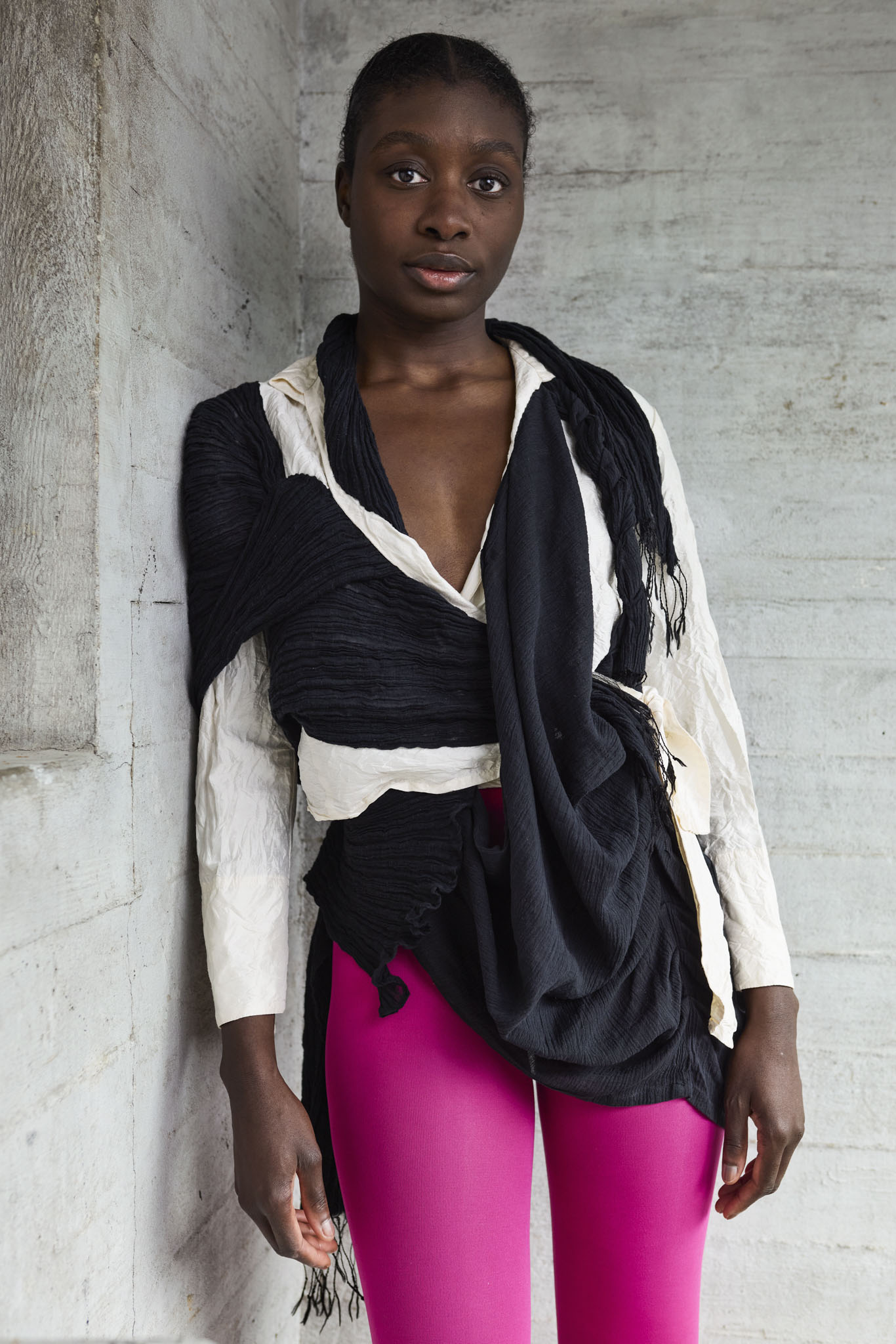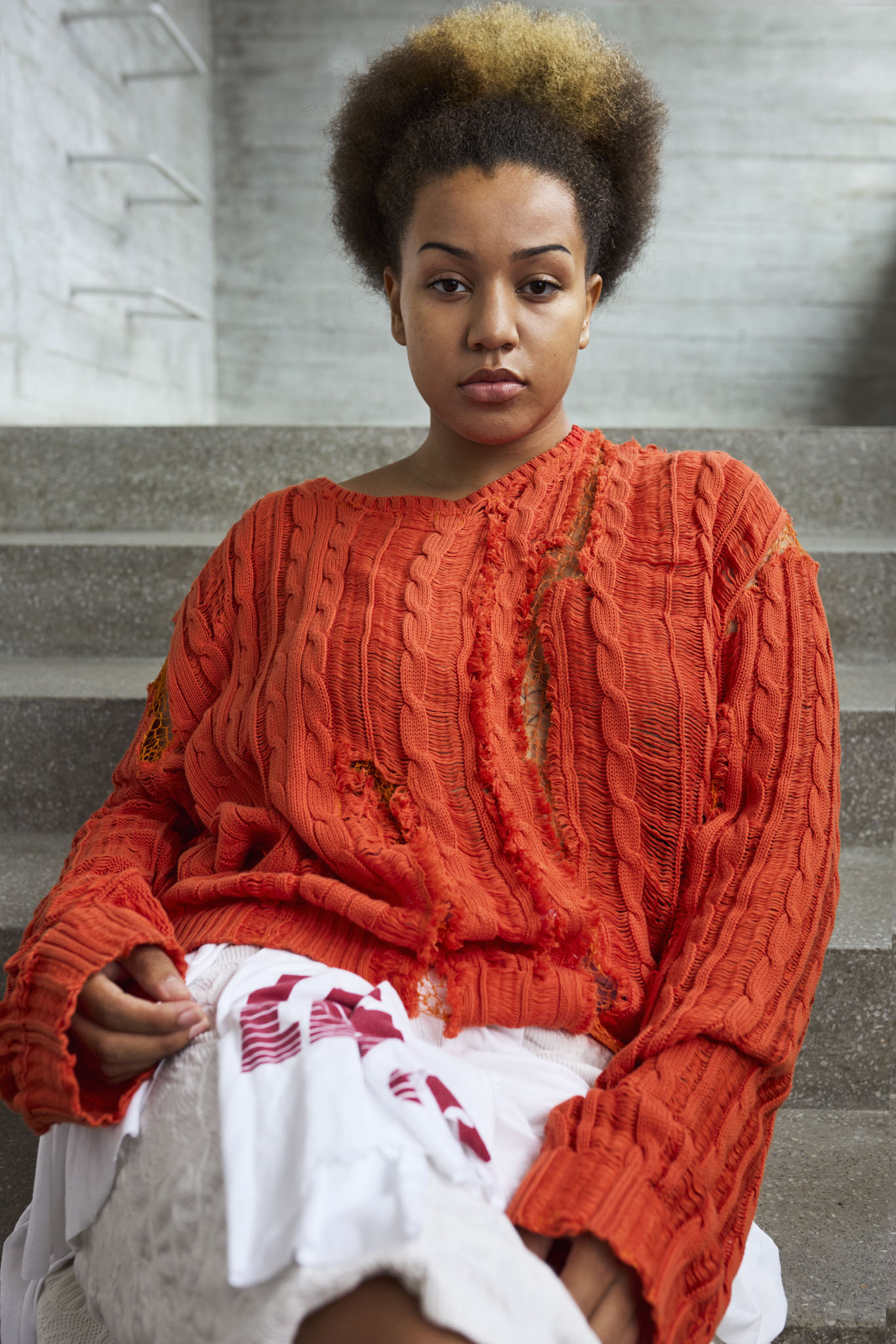Reimagined
Fashion Narratives

Redesign offers significant opportunities for the fashion industry, addressing both sustainability and economic challenges. By promoting reuse, it reduces textile waste, lowers the demand for new raw materials, and minimizes environmental impacts such as water consumption and greenhouse gas emissions.
From a designer’s perspective, creating durable, long-lasting clothing is key. Redesign thinking can be integrated from the start—through modular designs, durable materials, or repair-friendly features. Consumers also play a role in extending a garment’s lifespan through redesign techniques like embroidery or creative modifications, adding value and personalization. Innovative results emerge by reimagining existing features in new ways.
This approach also supports new business models where clothing is sold not just new but also in recycled or modified forms. As consumers increasingly seek individuality over mass production, redesign meets this demand with distinctive and sustainable solutions.
designers’ perspectives on redesign

Miska Kettu: Revitalizing the Everyday Shirt
Drawing inspiration from flea markets, where old garments are exchanged for new ones, the designer sought to merge discarded clothing into a single, renewed piece. Shirts were chosen for their ubiquity and frequent replacement, making them a prime candidate for reuse. While researching surplus textiles, the designer observed a large number of discarded shirts, highlighting their potential for redesign. Their simplicity also offered an opportunity to create a modern interpretation of this wardrobe staple.
To maintain a straightforward process, the designer avoided traditional patterns and worked directly with existing garments. By using basic cutting and sewing techniques, old shirts were deconstructed into usable fabric pieces and reassembled into a cohesive new design. This method emphasized the original textiles’ features while transforming them into a fresh and contemporary garment.

Elma Leminen: Reinventing Denim
Denim, one of the world’s most widely used materials, appears extensively in both secondhand clothing markets and textile waste. Jeans, in particular, are iconic and classic garments found in almost every wardrobe. However, reselling denim pants online or at flea markets can be challenging due to sizing and fit limitations. Despite this, denim’s durability and familiarity make it an ideal material for creative redesign.
Drawing inspiration from the rebellious spirit historically associated with denim, as well as personal memories of 2000s fashion, the designer explored the visual potential of discarded jeans. The waistbands of old jeans revealed unique graphic elements, such as varied dye patterns from both manufacturing and wear. By shaping the garment directly on a mannequin, these details were highlighted in a new design—resulting in a skirt crafted from five different denim waistbands.

Pauliina Friberg: The Art of Slow Craft
This designer approaches fashion with a delicate touch, favoring slow techniques that allow for precise, hands-on craftsmanship. By working stitch by stitch, garments can be shaped with control while embracing the organic nature of the material.
The choice of garment was inspired by its beautiful embroidery and the soft drape of the fabric. However, the designer saw potential in enhancing its texture, using a hand-sewn gathering technique to subtly reshape the surface. By varying stitch direction and tension, the fabric organically pulled into new forms, creating an unpredictable yet natural structure.
Working with an existing garment posed unique challenges, as its predefined shape set clear boundaries. Unlike previous projects that allowed for more material flexibility, this process focused on preserving as much of the original piece as possible while altering its essence in an approachable way. Hand-stitching proved to be an accessible method for adding dimension—ideal for those with little sewing experience but an interest in garment reuse and reinvention.
Slow craft techniques offer endless possibilities, evolving through both tradition and personal experimentation. The designer finds beauty in repairing and redesigning clothing, valuing the history embedded in each piece. Through thoughtful modifications, forgotten garments can be transformed into something deeply personal and worth preserving.

Sofia Dinello-Morais: Reclaiming Waste Through Intuitive Design
This designer’s creative process begins with an instinctive attraction to specific elements of discarded garments—textures, construction details, or how they shape the body. By working with existing structures, one garment serves as a foundation while elements from others are carefully incorporated. Sometimes, these additions blend seamlessly; other times, they transform the piece entirely, making the original almost disappear. The goal is to craft intricate, delicate, yet wearable garments that redefine what is considered waste. Through slow, thoughtful construction, each piece becomes a unique expression of care and craftsmanship.
The design process is highly intuitive, relying on pinning and cutting directly on a mannequin to respond to the fabric’s condition and characteristics. Some materials are manipulated through washing or twisting, while nearly all sewing is done by hand. Although working with reused garments presents challenges, it also unlocks creative possibilities. It allows for unexpected connections between unrelated pieces, repurposing small scraps and irregular details in innovative ways. Pre-existing seams, finishes, and elements are reimagined, bringing new life to materials in ways that are entirely unique and impossible to replicate.

Saimi Parikka: Reimagining Knitwear Through Unraveling
With a background in knitwear design, this designer naturally gravitated toward working with knits in the redesign project. Having primarily worked with wool, high-quality cotton knits presented an exciting new challenge—offering a more summer-appropriate material while maintaining durability for longevity. Given the time-intensive techniques of hand-sewing, knitting, and crocheting used in the process, working with poor-quality materials would not have been a viable choice.
Unlike traditional knitwear design, which starts with yarn, this project reversed the process by beginning with existing knit fabrics and unraveling them. Instead of creating new knits from scratch, the designer repurposed the original garment structures, assembling them into entirely new pieces. Many of the surplus garments sourced for the project were too small for resale. By strategically dropping stitches, the knit fabric expanded in width and length, making it possible to reshape and resize garments. This technique also introduced a unique new texture—delicate, slightly sheer, and lace-like in appearance.
Working with upcycled materials offers both inspiration and challenges. While redesign provides a sustainable alternative to excessive clothing production, one key consideration remains—how to commercialize slow, labor-intensive handcraft techniques in a way that makes them viable for the fashion industry.
